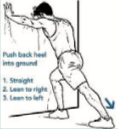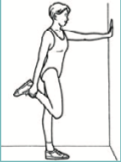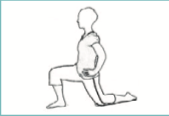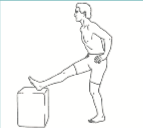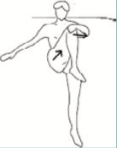Injury Prevention for Runners
Running is an addictive sport and a great way to get ft, lose or maintain weight and socialise with like-minded people. Like most sports, though, there are some risks of injury inherent within it. The following suggestions are ways in which to mitigate that risk.
Running shoes
Running is generally considered a cheap sport. By non runners. And largely it is, although it is nice to have some proper running gear to reduce the chance of chaffage etc. One bit of kit that is worth investing in is running specific shoes. Running is such a high impact sport that most people benefit from some cushioning. It is preferable to go to a running specific shop such as where they will do a gait analysis to identify which type of shoe would suit you. Most of the shops offer this service at around £20 but will take that off of the price of the shoe if you buy from them. The key element in choosing shoes is putting a pair on and feeling as if you’re not wearing any when you run. Comfort is key.
Strength & conditioning
Many of us runners think that running is enough to keep ft, healthy and strong. However, studies have shown that incorporating exercises such as squats, single-leg hops, and core work into the week can help prevent lower-body injuries, and improve performance. Strengthening the muscles around the knees and hips is particularly important to reduce the risk of injury for runners. Increasing strength means that you can increase your joint stability, thereby lowering the chance of repetitive stress injuries. By using runner-specific strength exercises, you can increase structural fitness, which is the ability of your bones, ligaments, tendons, and muscles to withstand the impact of running.
Sports Massage
Sports massage targets muscles and surrounding fascia, helping to realigning the muscle fibres and connective tissue and reduce adhesions, which can make a muscle feel tight or sore. Regular sessions will increase joint mobility, and help in injury prevention during exercise. Sports massage can help you increase the quantity and quality of running as it can catch niggles before they develop into an injury. If you’re very sore, a massage can help ease the feeling of tightness in your legs and reduce pain. It can also assist in a speedier recovery from a hard session such as a race or long run.
Mileage Increase
It can be tempting to ramp up the mileage, increasing the long run particularly, by a couple of miles each week. If you are a beginner runner, your main priority is to run consistently and allow your body to adjust to running. This probably means running 2-3 days per week for 1-4 miles. Keep it the same for 3-4 weeks at a time to allow your body to adjust and then build up a little more for the best chance of injury prevention. If a bit more experienced, and/or training for a half marathon then add on a mile or so to your long run each week and incorporate some tempo/speed work.
Warm up
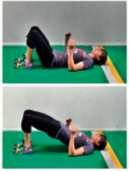
Warm down
Running is a high impact, repetitive sport and can cause muscles to shorten slightly; it is thought that stretching helps them return to their resting length. Stretches are most effective for injury prevention if held for 30 seconds and at a comfortable rather than painful stretch.
The following are just a few you could be doing post run:
Calf Stretch
Quad Stretch
Hamstring Stretch
Glutes Stretch

